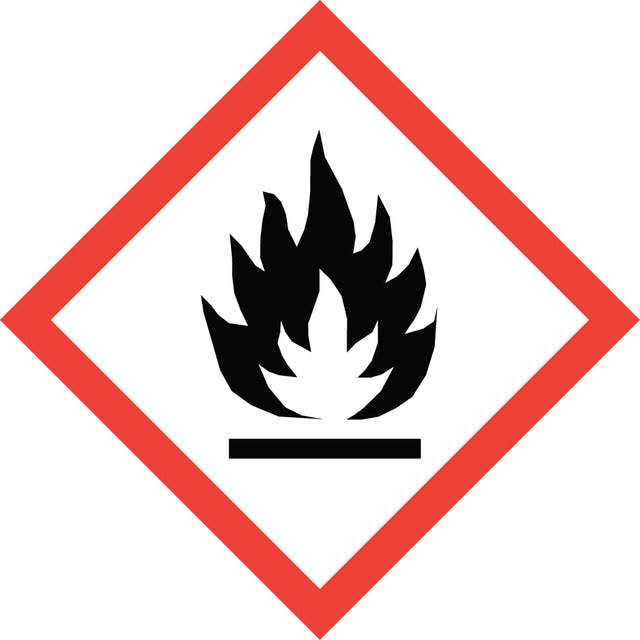Select a Size
About This Item
16 mmHg ( 37.7 °C)
7 mmHg ( 20 °C)
Product Name
o-Xylene, Reagent
SMILES string
Cc1ccccc1C
InChI
1S/C8H10/c1-7-5-3-4-6-8(7)2/h3-6H,1-2H3
InChI key
CTQNGGLPUBDAKN-UHFFFAOYSA-N
vapor density
3.7 (vs air)
vapor pressure
<0.1 atm ( 21.1 °C)
16 mmHg ( 37.7 °C)
7 mmHg ( 20 °C)
assay
≥98% (GC)
form
liquid
autoignition temp.
867 °F
expl. lim.
7 %
dilution
(for analytical testing)
color
APHA: ≤10
refractive index
n20/D 1.505 (lit.)
bp
143-145 °C (lit.)
mp
-26--23 °C (lit.)
transition temp
flash point 30 °C
solubility
0.18 g/L
density
0.879 g/mL at 20 °C (lit.)
0.88 g/cm3 at 20 °C
shipped in
ambient
storage temp.
room temp
Quality Level
Looking for similar products? Visit Product Comparison Guide
Packaging
As a global leader in lab reagents, we are constantly looking for new ways to optimize the safety of our products. The newly developed 4L solvent bottle design features advanced sealing technology that eliminates leaks to make the handling of solvents safer and more convenient than ever before.
See all the new features here!
Analysis Note
Color (APHA): 10 max
Form: Clear liquid
Infrared Spectrum: Conforms to standard
Application
- Environmental sampling of volatile organic compounds during the 2018 Camp Fire in Northern California.: This study analyzed volatile organic compounds, including o-Xylene, sampled during the 2018 Camp Fire in Northern California, highlighting the analytical methods used to assess environmental exposure and chemical composition in wildfire scenarios (Simms et al., 2021).
- Urinary BTEX, MTBE and naphthalene as biomarkers to gain environmental exposure profiles of the general population.: Focuses on the use of urinary biomarkers, such as BTEX (including o-Xylene), for assessing environmental exposure in populations, demonstrating the integration of analytical chemistry techniques in epidemiological studies (Fustinoni et al., 2010).
- Genotoxic effects of volatile organic compounds in a chemical factory as evaluated by the Tradescantia micronucleus assay and by chemical analysis.: Investigates the genotoxic effects of VOCs, including o-Xylene, in a chemical plant environment, using both biological assays and chemical analysis to evaluate risk and exposure (Kim et al., 2003).
- Time-gated pulsed glow discharge: real-time chemical speciation at the elemental, structural, and molecular level for gas chromatography time-of-flight mass spectrometry.: This paper presents a novel analytical technique for real-time chemical speciation, useful in analyzing compounds like o-Xylene, providing insights into complex analytical methodologies in chemistry (Lewis et al., 2003).
General description
Exceptional Quality Standards: These solvents meet or exceed ACS specifications, providing assurance of high quality that is crucial for accurate testing and analysis in quality control.
Consistent Reproducibility: Designed for precision, the solvents ensure that results can be reliably reproduced, which is vital for maintaining compliance and integrity in quality control processes.
Versatile Applications: Suitable for a variety of QC tasks, including analytical testing, method validation, and testing USP/NF monographs, these solvents support a comprehensive approach to quality assurance in laboratory settings.
signalword
Danger
Hazard Classifications
Acute Tox. 4 Dermal - Acute Tox. 4 Inhalation - Aquatic Chronic 3 - Asp. Tox. 1 - Eye Irrit. 2 - Flam. Liq. 3 - Skin Irrit. 2 - STOT SE 3
target_organs
Respiratory system
Storage Class
3 - Flammable liquids
wgk
WGK 2
flash_point_f
89.6 °F - closed cup
flash_point_c
32.0 °C - closed cup
Regulatory Information
Certificates of Analysis (COA)
Search for Certificates of Analysis (COA) by entering the products Lot/Batch Number. Lot and Batch Numbers can be found on a product’s label following the words ‘Lot’ or ‘Batch’.
Already Own This Product?
Find documentation for the products that you have recently purchased in the Document Library.
Our team of scientists has experience in all areas of research including Life Science, Material Science, Chemical Synthesis, Chromatography, Analytical and many others.
Contact Technical Service

